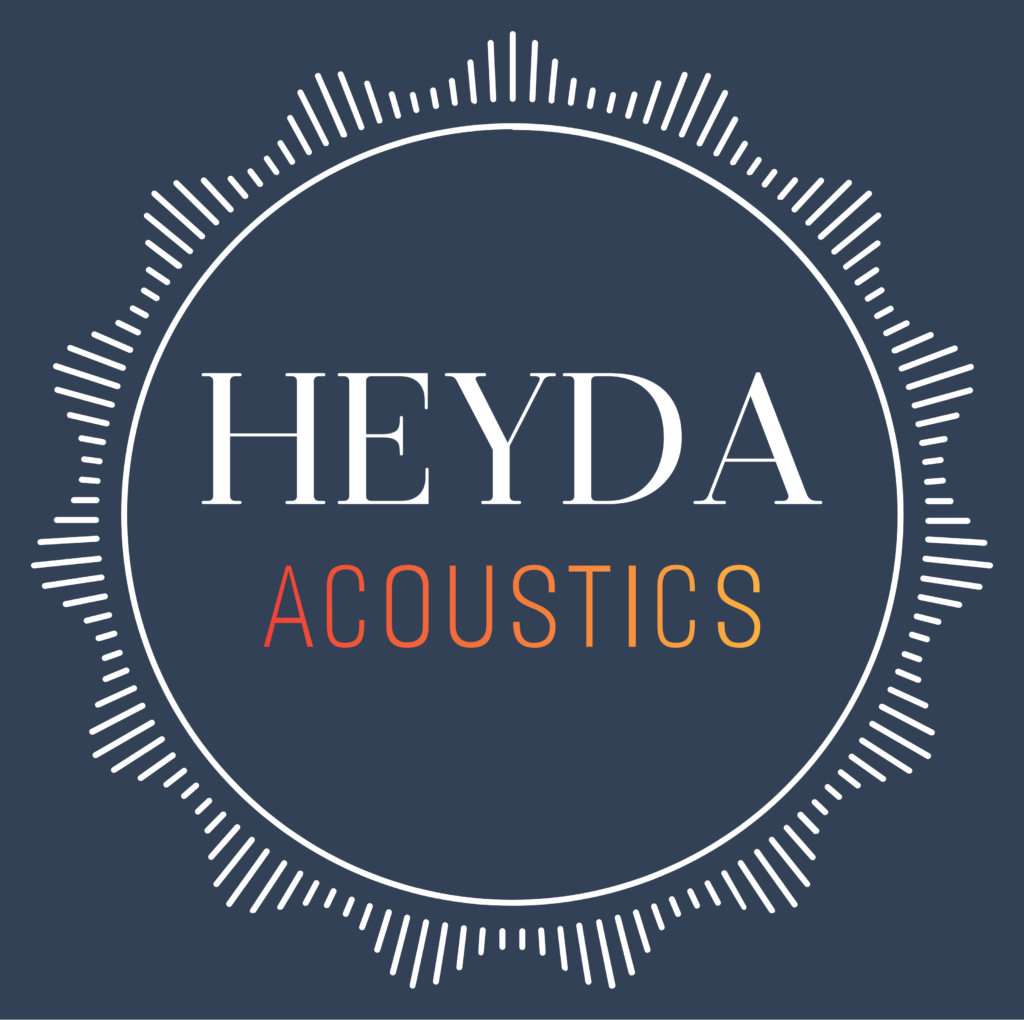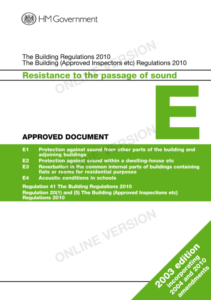Achieving Compliance with Part E of the Building Regulations
How to Comply with the Residential Sound Insulation Requirements
Our Advice for Achieving Compliance with Part E of the Building Regulations
Achieving compliance with the Part E of the Building Regulations for sound insulation is a critical step in the construction and refurbishment of residential properties in England and Wales. These regulations are designed to ensure that homes provide a comfortable living environment, free from excessive noise transfer between separate units. This blog post will provide an overview of the Building Regulation Approved Document E requirements and guide you through the resources and best practices for achieving compliance.
Understanding Approved Document E
Part E of the Building Regulations pertains to resistance to the passage of sound. It outlines the minimum standards for sound insulation in residential buildings to protect occupants from unwanted noise. The document provides requirements for new builds, conversions, and refurbishments, setting out clear requirements for both airborne and impact sound insulation between dwellings.
Achieving Compliance: New Build Residential Properties
For new build residential properties, achieving compliance with Part E of the Building Regulations can be approached in two ways: the Robust Details method or the standard testing method.
- Robust Details Method: This approach involves using pre-approved construction details that meet or exceed the sound insulation requirements of Approved Document E. Robust Details Ltd provides a design guide available online, offering a wealth of construction types and detailing options (available here after signing up to the Robust Details website). Utilising these robust details eliminates the need for pre-completion testing, provided you have registered the scheme prior to construction, and the construction strictly follows the specified designs.
- Standard Testing Method: Alternatively, builders can opt for the standard testing method, which requires pre-completion sound tests to be conducted by an accredited body to demonstrate compliance. This method offers flexibility in design but requires careful planning and execution to ensure that the finished construction meets the required standards. Even if going down the testing route, the Robust Details design guide can be followed to aide compliance. The Robust Details separating wall and floor types are designed to achieve 5 dB better than the Build Regulation requirements, and so following those design principles is a good way of improving the likelihood of achieving compliance on completion.
Refurbishments: Meeting the Standards
Refurbishments pose unique challenges for achieving compliance with Part E of the Building Regulations, particularly when dealing with existing structures that may not have been designed with modern sound insulation standards in mind. The Cellecta Acoustic Brochure is an invaluable resource for refurbishment projects, offering a range of sample construction types designed to achieve compliance with Approved Document E, including build-ups which are typical for refurbishments. This brochure provides practical solutions for enhancing sound insulation in refurbishments, from simple upgrades to more comprehensive overhauls.
Cellecta typically provide in-situ performance data and therefore selecting a build-up to achieve the Building Regulation requirements should be relatively straightforward. Always talk to a professional if you are unsure, and if you need a guarantee.
The Importance of Detailing and Workmanship
Regardless of the method chosen or the type of project, good detailing and high-quality workmanship are essential for achieving effective sound insulation. Even the best designs can fall short if not executed with precision and care. Attention to detail in areas such as junctions, flanking paths, and service penetrations is crucial for preventing sound leakage and ensuring compliance.
Consulting an Acoustic Consultant
Given the complexity of sound insulation and the nuances of achieving compliance with Part E of the Building Regulations, consulting with an acoustic consultant is highly recommended. An acoustic consultant can provide expert guidance on the design and execution of sound insulation measures, helping to identify potential issues early in the process and recommending solutions to ensure compliance. Whether you are unsure about the specifics of your project or seeking a guarantee of compliance, an acoustic consultant is an invaluable resource.
Conclusion

Achieving compliance with Part E of the Building Regulations for sound insulation is a key aspect of residential construction and refurbishment projects, ensuring that homes are comfortable and relatively-free from unwanted noise. By understanding the requirements of Approved Document E, utilising resources such as the Robust Details design guide and the Cellecta Sound Proofing Solutions Brochure, and focusing on good detailing and workmanship, developers and contractors can successfully navigate these regulations. Consulting with an acoustic consultant further enhances the likelihood of compliance, providing peace of mind and ensuring that residential properties meet the necessary standards for sound insulation.
At Heyda, we offer a complete range of services to guide your residential development from its conceptual stages, through planning and design, to construction, and finally to commissioning.
James Williams, our Director at Heyda, brings personal experience from successfully completing numerous residential projects. This wealth of expertise positions him perfectly to provide the bespoke acoustic solutions your development requires. With a focus on creating appropriate living conditions, Heyda is committed to ensuring that every dwelling is acoustically optimised for the benefit of its residents.
For further advise or if you have any questions please get in touch with us here: https://heyda.co.uk/contact/
Further Reading/Resources
Talk to us
Contact Heyda today for a specialised consultation. Together, let’s design educational spaces where sound quality significantly contributes to the learning experience, fostering focus and understanding. Reach out to us, and let’s transform the acoustic environment of your school.


